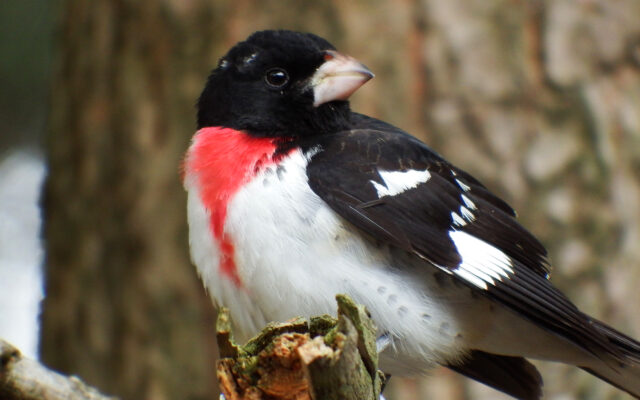
As songbirds flock to Maine, here’s how you can find their hiding spots
By Bob Duchesne
This is the weekend when lots of songbirds start flooding back into Maine. Our neotropical migrants are about to get wicked noisy, defending territories and wooing mates.
Concurrently, there will be bird walks, festivals and tours aplenty to take advantage of breeding season. But for all those folks who wish somebody would come up with a do-it-yourself guide, I’m happy to report that somebody already did.
I’ll admit, I’m weird. While most birders want to know the identity of every bird, I want to know the location of every bird. This bird-finding fetish dates back about 30 years, when I first started leading trips for Maine Audubon.
Some of those trips were multi-day tours to far-flung places in Maine, others to Atlantic Canada. After each outing, I’d think to myself, “Where to next?” I didn’t want to lead the same trip over and over every year.
Slowly, I developed a curiosity about where to find birds throughout Maine. At first, my goal was to design new birding trips for Audubon members. Later, I just wanted to know where every bird was.
After a decade of exploring, it occurred to me that I should probably share the results of my adventures. That led to development of the Maine Birding Trail.
The Maine Birding Trail is a tool you can use this spring to plan your own do-it-yourself adventures. I wrote the guidebook in 2009: “Maine Birding Trail: The Official Guide to More Than 260 Accessible Sites.” It’s available through all online retailers, and a few local bookstores.
However, I’ll confess privately that you don’t need to buy the book. Most of its content is free online at MaineBirdingTrail.com. Don’t let that secret leave the room.
The rationale for the Maine Birding Trail is simple. Maine is an incredibly diverse place, with common and unusual birds hiding in every corner. Maine is the most-forested state in the nation. Its elevation rises a mile from saltwater to the Katahdin summit. Its coastline is so rugged, it would be longer than California’s if you straightened it out. Its tides are among the highest in the country.
Maine is full of habitat transitions. Maine is where southern beaches give way to rocky coast. Maine is where the predominantly hardwood forest of Appalachia begins to change into the predominantly softwood forest of Canada.
Maine is where the continents split apart 200 million years ago, creating tectonic upheavals to the underlying bedrock that were later buried by the silt of ice age glaciers and the marine clay of changeable sea levels. Maine has innumerable lakes, ponds, rivers and streams. As a result, Maine’s map is a mosaic of habitat diversity, with a mix of different birds in every location — if you know where to look.
The Maine Birding Trail is a useful tool for finding those birding hotspots. Probably the first step in planning your own unguided adventure is to review the locations described on the Trail Sites pages. However, knowing how to bird is as important as knowing where to bird.
I’ve posted explanations on birding everything from the North Maine Woods to the Gulf of Maine. There’s advice on taking boats to see puffins and more boats to see ocean species. I’ve posted pages listing festivals, tours and private guides-for-hire. There are bird checklists and pest warnings.
There is a page with links to birding videos. Over the last five years, I’ve devoted myself to producing videos on how to bird and where to bird in Maine, as well as uploading travelogues that detail my own encounters with some of Maine’s more unusual species and places. Last year, I went so far as to start the Bob Duchesne YouTube channel, collecting all my videos in one place. Just go to YouTube and enter my name to reach the channel. Shameless self-promotion: Subscribe, if you want to be alerted to all new videos as they are posted.
There are countless excuses for not venturing beyond your backyard. Embarrassment usually tops the list. Many folks who might enjoy going on a guided group event are fearful of feeling like the least-experienced birder in the crowd. In reality, most participants are equally inexperienced. Frankly, even the guide makes mistakes. Follow me around. You’ll see.
Nonetheless, picking a nearby spot off the Maine Birding Trail and doing a little crowd-free private exploration can help build skills and confidence. It’s one way to dip a bashful toe in the water of learning how to identify birds, during their active breeding season.